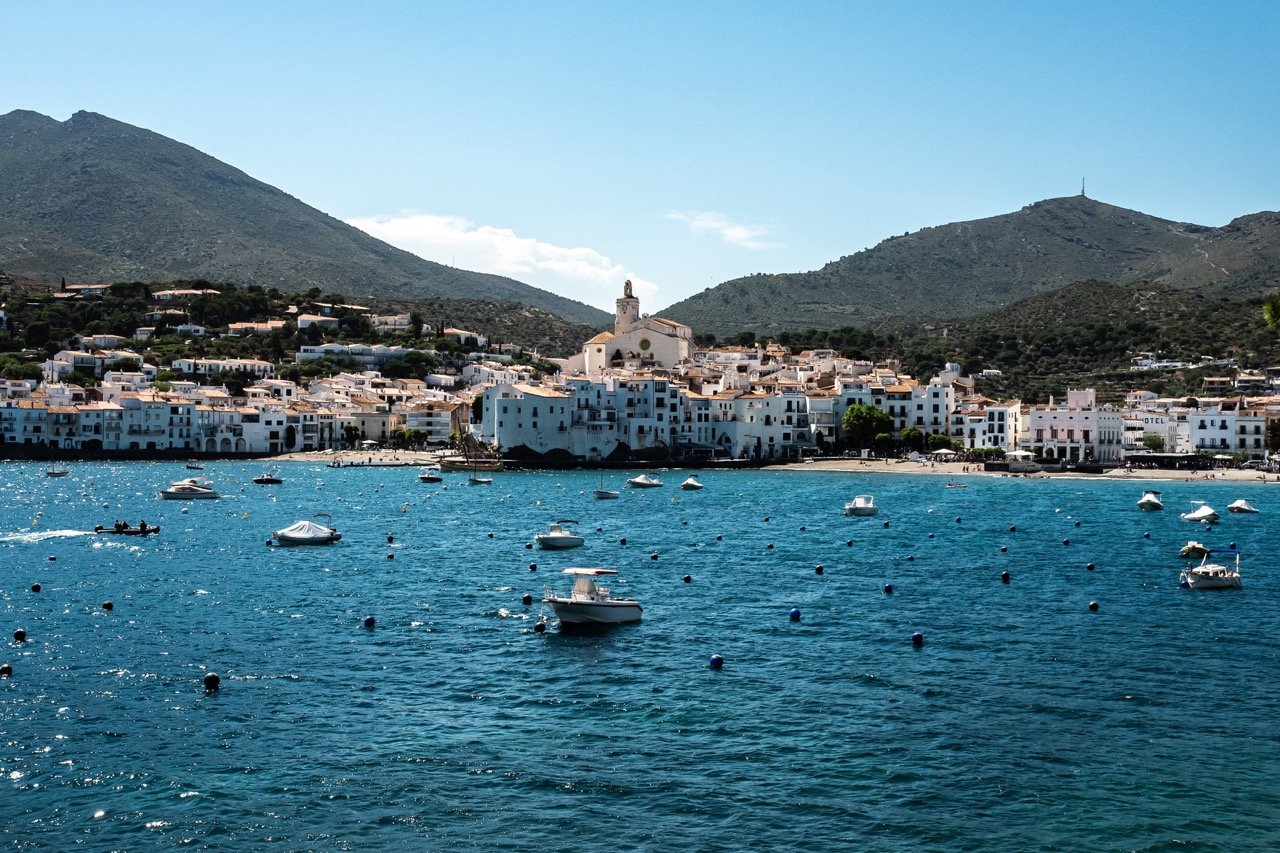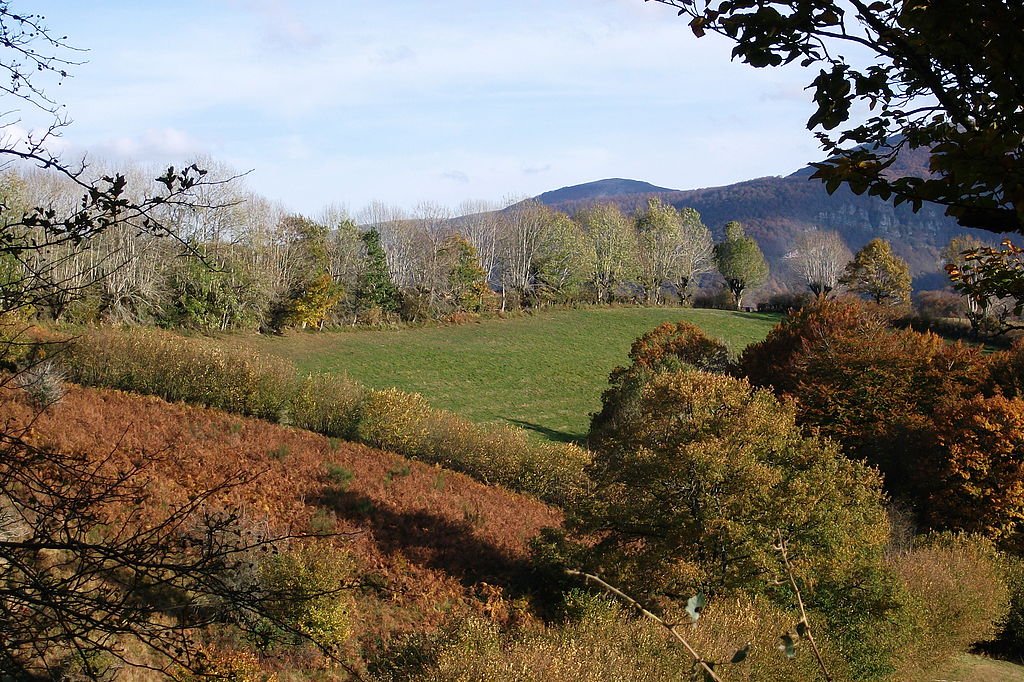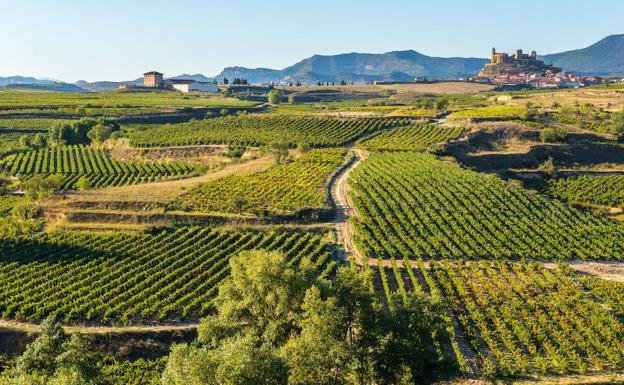Guide to the Regions of Spain
Photo: Haylli, CC BY-SA 3.0, via Wikimedia Commons
There’s a reason why Spain is known as a nation of nations. There are 17 autonomous communities here, many with their own official language (or at least a different dialect of Spanish), their own culture, and unique history.
Below, we’ll cover the plains, valleys, and plateaus of Central Spain, the mountains and valleys of the Northeast (near to France), the Mediterranean and Atlantic coasts, and of course the island chains in the Mediterranean Sea and Atlantic Ocean.
See more of our Spain travel guides:
Table of Contents
Let’s plan your itinerary!
If you could use some help planning your Spain itinerary, schedule a Spain travel consultation with Alfonso, our Spain-based Local Expert.
These are one-hour Zoom calls where you’ll get to chat with Alfonso about the trip you’re planning and he’ll share his tips and advice, answer your travel questions, and help you perfect your itinerary.
Central Spain
Madrid, Castilla y León, Castilla-La Mancha, & Extremadura
Madrid/Community of Madrid
The Palacio Real in Madrid
Madrid is the capital and largest city in Spain and is the seat of the central government. It’s pretty much located in the center of the country, making it a good starting point for any trip to Spain.
The surrounding metropolitan area is its own administrative region, called la comunidad de Madrid. The region is small by Spanish standards and includes a few mid-size cities like Getafe as well as many of Madrid’s suburbs.
Madrid itself is cosmopolitan and cool, with world-class cuisine, graceful architecture, and a forward-thinking population. But above all, Madrid is loaded with history and culture; you’ll find museums, monuments, parks, and theaters everywhere you turn.
Castilla y León
The cathedral in Salamanca
Segovia’s incredbile Alcázar
To the north of Madrid is the large autonomous region of Castilla y León, a giant sprawl of vast plains and mountain peaks, medieval villages, and fairy-tale castles erected by the former Christian Kingdoms to the north.
Like the Wild West in the USA, the vast and baking plains here were considered one of Spain’s final frontiers – the Moors didn’t even bother to settle here after conquering the place.
It’s less popular to include on an itinerary, but boasts some incredible places to visit, including the university city of Salamanca, and the cities Burgos and Leon, home to two of Spain’s most magnificent cathedrals. When here, be sure to also visit Ávila and Segovia.
Castilla-La Mancha
The city of Toledo
Head south of Marid and you’ll enter the autonomous community of Castilla-La Mancha. This region is famous as the setting for Miguel de Cervantes’ novel, Don Quixote, so you can expect the landscapes to resemble the descriptions in what is one of the most famous novels in the world.
There are lone windmills on hills, vast plains dotted with olive trees and grape vines, and the crumbling remains of castles. The most famous place here is Toledo, the capital city whose historic core is a UNESCO World Heritage Site and filled with elegant synagogues, mosques, and cathedrals.
Extremadura
The town of Cáceres
The Embalse de Alange reservoir
Finally, Extremadura sits on the western edge of Spain, bordering Portugal and Andalusia. As such, it has a long history of being a frontier land between cultures and kingdoms, with many monuments to reflect that status.
Rarely visited by tourists, this is a quiet, mostly agricultural region that actually has a lot to see, especially if you’re interested in history.
You’ll find ruins and traces of every civilization that has passed through here, from the Romans, the Visigoths, the Moors, and the Christians.
Northeast Spain
Navarre, La Rioja, Aragon, and Catalonia
Navarre
Pamplona, Navarra’s marquee destination
A stretch of the lovely Irati Forest. Photo: Feranza, CC BY-SA 3.0, via Wikimedia Commons
To the northeast as you venture toward France, you’ll come to what has historically been called ‘the flea between two monkeys’: Navarre. Bordering France at one end, it was always the entrance into Spain from mainland Europe, and still is if you’re a Pilgrim trekking along the Camino Frances after crossing over from France via the mountain pass of Roncesvalles.
The geography here is diverse, from the misty Pyrenees mountains to the vineyards and farms dotted throughout the sunbaked plains further south.
Every July, the capital Pamplona shakes off its stuffy and austere reputation to throw the wildest party in Europe: Las Fiestas de San Fermín, also known as the Running of the Bulls.


La Rioja
San Vicente de la Sonsierra
Vineyards in La Rioja. Photo: Eryna, CC BY-SA 4.0, via Wikimedia Commons
To the southwest of Navarra is Spain’s smallest autonomous community, La Rioja. With the river Ebro running through it, this is a place of fantastic vineyards, producing Spain’s most famous wine.
There are mountains that are great for skiing in winter, while several different microclimates also make it an agreeable place to grow vegetables and enjoy mild temperatures year-round.
Logroño is the capital city, a small place famed amongst Spaniards for having some of the best tapas in the country.
Aragon
Torla Ordesa, in Aragon’s Huesca province
The cathedral of Zaragoza
East of Navarre is Aragon, home to the highest mountains in the Pyrenees chain. The history here is amongst the best in the country, since the Crown of Aragon once lay claim to much of the Mediterranean region, including territories in France, Italy, and even as far out as Greece.
There’s plenty of architectural and artistic heritage to explore, and a varied number of attractions from Romanesque churches and Gothic cathedrals to Renaissance palaces and the distinctive Mudejar style of architecture that combines Islamic art and motifs to Christian styles of architecture.
The capital is Zaragoza, a buzzing city with great food and a sizeable student population.

Catalonia
The Plaza España in Barcelona
The town of Llafranc, on the Costa Brava
Finally, we come to Catalonia, home to Spain’s second largest city, Barcelona. The city in of itself is one of the biggest draws of a trip to Spain, with beautiful beaches, an easy-going way of life, and some of the finest food and fiestas in the country.
The Catalans also have one of the strongest identities in Spain, stemming from the region’s unique history, language, and culture. It’s also one of the most prosperous corners of Spain, with plenty of industry, a couple of fantastic wine regions, and a growing reputation as a tech and startup hub.
There’s also easy access to the stunning Costa Brava and the eastern peaks of the Pyrenees.
The Mediterranean Coast
Valencia, Murcia, & Andalusia
Valencia
A lovely square in Valencia’s historic center
Looking down on the coast from Alicante’s hilltop fortress
Heading down the coast from Barcelona along the Mediterranean Coast, the next autonomous community you’ll find is Valencia (both the name of the region and the capital city). Here, Spain’s third-largest city is a fantastic combination of sun, beaches, decadent food, all without the major crowds seen further up the coast in Barcelona.
The wonderful historic center also gives way to elegant green spaces, and the wonderful City of Art and Sciences, the futuristic piece of architecture and major landmark of Valencia.
Elsewhere along the coast you’ll find lots of popular tourist resorts (such as Alicante and Benidorm), while further inland you’ll find quiet villages and towns as well as a few natural parks full of Mediterranean landscapes.
Murcia
Caravaca de La Cruz, in Murcia
Further to the southwest is Murcia, a region of Spain that most travelers will skip over completely in lieu of getting to Andalusia further on. But there’s a lot to be said about a visit to this region, one of the most arid in Europe.
Dusty old towns, plenty of Moorish architecture, and a capital city (also called Murcia) that has a large student population, ensuring there are a lot of fantastic tapas bars and clubs to enjoy on a night out.
On the coast, Cartagena has historically been one of the most important trading ports on the Iberian Peninsula and has some fantastic Roman heritage.
Andalusia
Sevilla’s Royal Alcazar Palace
A beach in Nerja, in Andalusia’s Costa del Sol
Ronda, one of the white villages in inland Andalusia
Andalusia almost needs no introduction; what you imagine when you picture Spain is found here. This is a region where people dance to the sounds of flamenco guitar, where you’ll enjoy beers and tapas in sun-dappled squares, roaming through cobbled streets.
Along the Mediterranean is one of the most famous areas in Spain, the Costa del Sol, which has long been touristed by British, German, and Dutch visitors. At one end of the Costa is Malaga, one of the fastest growing cities in Spain, while inland, Seville attracts almost as much attention as Madrid and Barcelona.
Also inland is where you’ll find Granada, home to the finest Moorish palace in the world, the Alhambra.
In Cordoba the Moors also left behind a grand Mosque called the Mezquita, and there’s even more Moorish heritage to explore in the picturesque white villages sitting atop rugged mountains.
The Atlantic Coast
The Basque Country, Cantabria, Asturias, and Galicia
Basque Country
San Sebastián and its glorious La Concha beach
Bilbao
Stretching along northern Spain is a beautifully rugged coastline along the Bay of Biscay, and some of Spain’s most lush and green countryside. At the eastern end, bordering France, the Pyrenees, and Navarre, is the Basque Country.
This is truly one of the most remarkable places in all of Europe, home to the Basques who have a culture and language completely unique from anything else found on the entire continent.
It’s also another one of Spain’s wealthier regions, and you’ll see it in the beauty of both San Sebastian and Bilbao, which should make it on any longer itinerary for Spain. The Basques are also renowned for their cooking prowess, and to visit here means to gorge on pintxos, fine seafood, and in some of the world’s best restaurants.
Cantabria
Cantabria’s majestic Picos de Europa mountains
The city of Santander
Continue west along the coast from the Basque Country and tourist numbers drop off considerably. The landscapes of Cantabria are much the same as the landscapes in the Basque Country, rolling green hills and mountains inland, and a stunning stretch of coast.
The capital Santander is a modest city set on one of the most beautiful bays in the country. Back in the day the Spanish Royals use to spend their summers here, and there’s an air of elegance that still presides over the city.
Closer to the Asturian border is where you’ll find the incredible Picos de Europa, towering massifs that the explorers of old first saw on their return journey from the new world. Today it’s one of Spain’s finest national parks.
Asturias
The Asturian Coast
The Cathedral of Oviedo. Photo: Simon Burchell, CC BY-SA 4.0, via Wikimedia Commons. Cropped from original.
Lake Covadonga, up in the Asturian mountains
Asturias might just be one of Spain’s best-kept secrets. This is a favorite place among the Spanish themselves, who come for the mild summers and stupendous nature. It’s from Asturias where the reconquest of Spain began, when the Christians took the country back from the Moors, and thus, really where the idea of Spain as a country was born.
The culture here is unique; there’s Celtic heritage (festivals involve heavy use of a Spanish kind of bagpipe), and a trio of cities Oviedo, Aviles, and Gijon make up a wonderful triangle for exploring.
The coast here is also famous for surfing, seafood, and its stunning beaches, most of which remain completely uncrowded in the summer in comparison to the Mediterranean. And inland? Access to the spectacular western and northern edges of the Picos de Europa National Park.
Galicia
The Torre de Hércules in Galicia
A misty cove in Galicia’s Rias Baixas
West of Asturias is Galicia, which can truly be considered the green heart of Spain. A unique and independent place, here the locals speak as much of their own language (Galician) as they do Spanish and take part in their own distinctive culture.
It’s most famous as the site of Santiago de Compostela, which is without a doubt one of the most beautiful cities in Spain. It’s here where thousands of foot-sore Pilgrims end up each year after having conquered one of the many Camino de Santiago pilgrimage routes.
Still, there’s more to Galicia than just Santiago, including a rugged and wild coastline, beautiful river deltas near the Portuguese border and up north, and a large area of hot springs around Ourense.
The Balearic Islands
The Catedral-Basílica de Santa María de Mallorca
A beautiful beach in Mallorca
Off the coast of Catalonia lie the popular Balearic Islands, made up of Mallorca, Menorca, Ibiza, and Formentera. Each has a distinctive vibe, although all are popular and share similar traits, with stunning beaches, plenty of backroads through quiet countryside, and some beautiful, historic cities.
Ibiza is particularly famous as home to some of the largest and busiest night clubs in Spain, where world-famous DJs play during the summer.
The Canary Islands
A verdant valley
A beach on the island of Tenerife
Off the coast of North Africa lie the Canary Islands, a unique volcanic archipelago that belongs to Spain. Made up of seven main islands, here you can visit Tenerife, Fuerteventura, Gran Canaria, Lanzarote, La Palma, La Gomera, and El Hierro.
Each of the islands has a different vibe and geographical makeup, but most are known for their beach resorts and are popular with European travelers.



Alfonso Nuñez
Spain Expert based in San Sebastián
¡Hola y buenos días! 👋
Hi, I'm Alfonso, and I've been a tour guide and travel consultant here in Spain for the last 18 years. If you're looking for some local advice on your trip, I'd love to help!
Learn more Book a consultation
Connect with Alfonso
















































